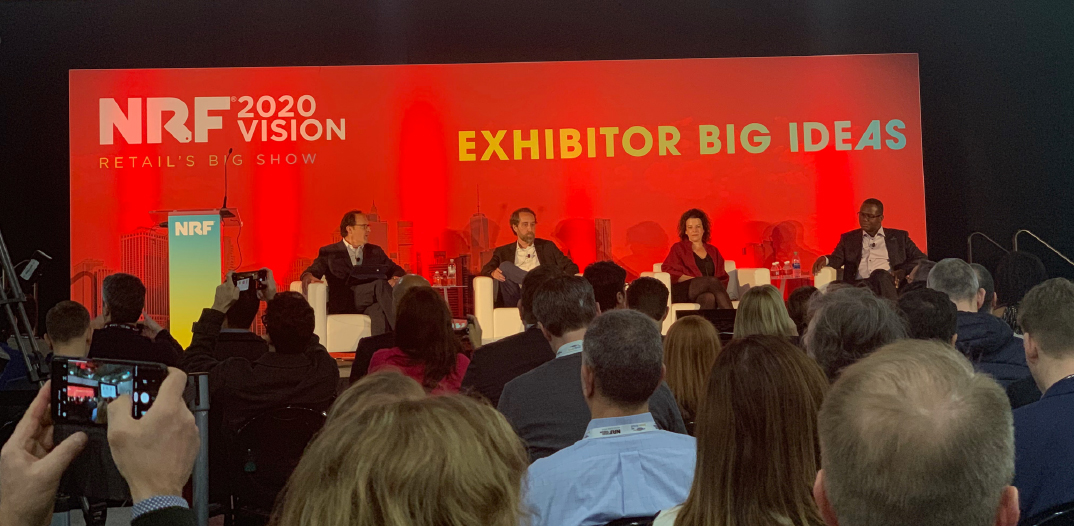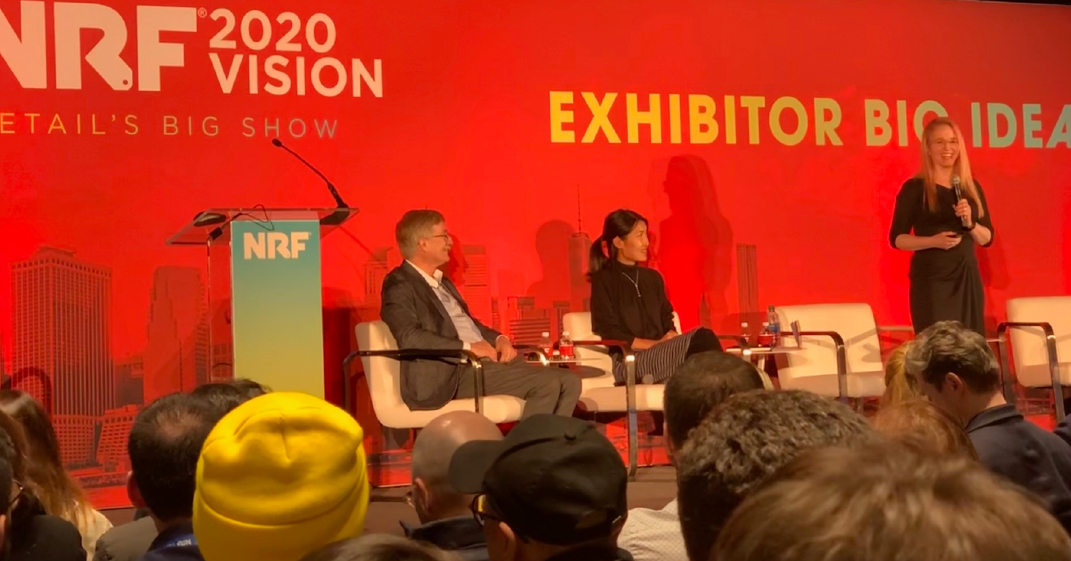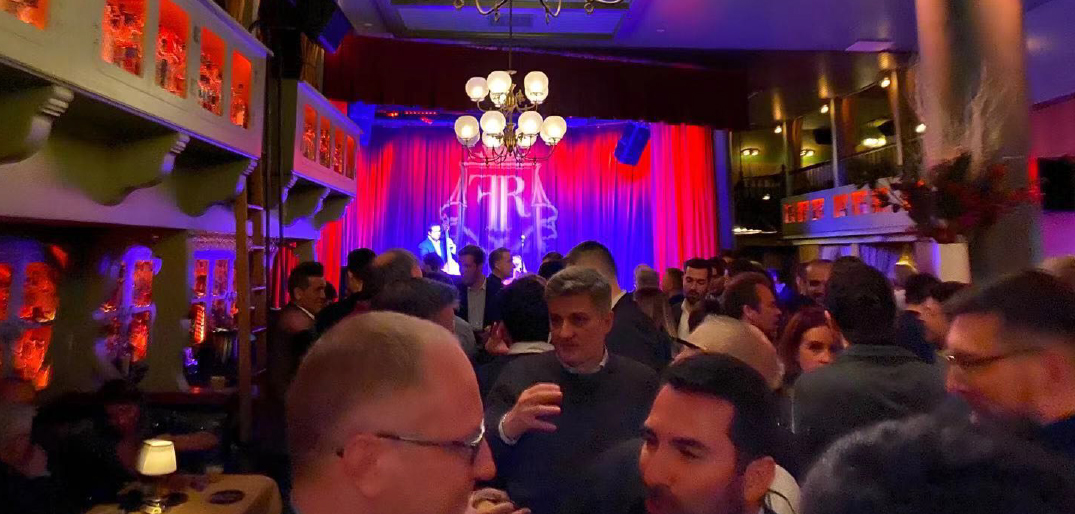
DIpil Das
Technology That Enhances Human Connections Drive Business Improvement
Starbucks President and CEO Kevin Johnson outlined how the company is working to enhance human connections among employees and customers, extending the customer experience via the company’s digital platforms. Starbucks believes its frontline staff are best positioned to know if the company is delivering on customer service, adding that shared experiences create common understanding, driving organizational momentum and unlocking individual team member’s potential.
Starbucks uses technology to support employees and enhance human connections. For example, it uses what it calls “Deep Brew” technology that leverages artificial intelligence and machine learning to more accurately manage inventory and ensure adequate staffing for busy periods. As a result, employees have more time to connect with customers, which the company says delivered a higher average ticket.
Leverage Technology to Price Smarter in Today’s Multichannel Retail Environment
Bed Bath & Beyond Chief Value Optimization Officer Barrie Carmel said the company has found over 80% of consumers search online before entering the store: The consumer journey begins online and retailers should leverage social media, email marketing and other digital tools to meet customers where they are, while also ensuring promotions map to their interests.
One example: Coupons are huge for Bed Bath & Beyond and help drive online and in-store sales—but coupons are not embraced by younger consumers as much as they are by their older counterparts. So, the company has modified its mobile app to automatically load all digital coupons and discounts available to the consumer, digitizing what was a paper-based marketing tool and pulling it into the multichannel age.
[caption id="attachment_102278" align="aligncenter" width="700"] From left to right: Scott Zucker, SVP of Customer Success at Revionics; Leonardo Cyreno, Pricing Director at Leroy Merlin Brazil; Barrie Carmel, Chief Value Optimization Officer at Bed Bath & Beyond; Moussa Coulibaly, VP of Pricing, Merchandising Analytics and Reporting at Dick’s Sporting Goods.
From left to right: Scott Zucker, SVP of Customer Success at Revionics; Leonardo Cyreno, Pricing Director at Leroy Merlin Brazil; Barrie Carmel, Chief Value Optimization Officer at Bed Bath & Beyond; Moussa Coulibaly, VP of Pricing, Merchandising Analytics and Reporting at Dick’s Sporting Goods.
Source: Coresight Research [/caption] Gamification Can Capture the Attention of the Next Generation of Consumers Niantic Labs Global Head of Product for Sponsorship/Business Processes Carla Li presented data on location-based augmented reality game Pokemon Go: The game has been downloaded over one billion times and, contrary to common belief, the users’ median age is 33 and 43% are aged 25-44. Li says mobile gaming has gone mainstream, with two-thirds of worldwide male and female consumers playing at least once in the past month. In addition, some 84% of players interacted with a commercial location—and 58% said they spent money there. Brands and retailers can leverage similar real-world games to drive foot traffic, enhance the customer experience—and incorporate fun and gamification into the shopping journey. One example is 7-Eleven Taiwan, which increased purchases 10.5% by driving people to visit stores to participate in in-store competitions. The West Can Learn from the East: Invent Shopping Holidays! Coresight Research CEO and Founder Deborah Weinswig outlined how Gen Zers shop predominantly at discount stores in the US, but in China, a booming young affluent generation is driving spending. That said, China’s consumers want to be more informed and require a higher level of touch: The average consumer in China needs 12 touchpoints to convert to purchase, while the average US shopper needs only four. Key opinion leaders (KOLs) play a huge role in influencing consumer perceptions and proclivity to buy—as can word-of-mouth endorsements from other consumers, especially friends. Weinswig also encouraged brands and retailers in the US to create shopping holidays to drive sales: China’s consumers celebrate four Valentine’s Days per year. Alibaba invented the Singles’ Day shopping festival only a few years ago, leveraging an existing but otherwise little-known event, and has grown it into one of the world’s single largest sales events. In 2019, China’s merchants posted total gross merchandise volume (GMV) of $38.4 billion in Singles’ Day shopping. Brands and retailers in the US generated a combined $24.6 billion in online revenue over four whole days leading up to Cyber Monday—while Alibaba’s Singles’ Day take was nearly five times the total US online revenue on Cyber Monday itself. [caption id="attachment_102279" align="aligncenter" width="700"] From left to right: Rick Chavie, CEO at Enterworks; Carla Li, Global Head of Product for Sponsorship/Business Processes at Niantic Labs; Deborah Weinswig, CEO and Founder at Coresight Research
From left to right: Rick Chavie, CEO at Enterworks; Carla Li, Global Head of Product for Sponsorship/Business Processes at Niantic Labs; Deborah Weinswig, CEO and Founder at Coresight Research
Source: Coresight Research [/caption] Recommerce is Here to Stay: Brands that Lead in this Space are Poised for Continued Success The rise of rental, used and repaired clothing apps is not a passing trend: It is a sign of a new consumer pattern that is here to stay as more (especially younger) consumers embrace the “sharing” economy—and become less attached to the need to “own” the clothes they wear. Patagonia Head of Corporate Development Phil Graves outlined that repairing clothing to keep it in use (even though that may have meant a lost sales opportunity) has been part of Patagonia’s business model since the 1970s and the company now has over 70 repair centers. In 2017, Patagonia went all-in on recommerce through its Worn Wear site, where consumers can trade Patagonia items in good condition for gift cards valued from $10 to $100 (based on the what is returned). Customers can use the gift cards at Patagonia retail stores, on WornWear.com or the Yerdle.com Resale platform. Yerdle posts the products it collects to Wornwear.com and has created a “recrafted” line of upcycled clothing (made from other clothes) also available on Worn Wear. In 2019 the company saw 40% revenue growth in Worn Wear—with a customer age 10 years younger than the average Patagonia customer. The company also launched a physical Worn Wear resale store in Boulder, Colorado, selling only used clothing. NRF Networking with Global Product and Service Providers On Sunday night, the Coresight Research team attended a jazz and cocktail event hosted by global IoT services provider Temera, and sponsored by Lab ID and Meiyume. Temera was founded in 2009 and is headquartered in Italy; it provides RIFD technology for the fashion, luxury and retail sectors, providing digital authentication of products through the supply chain. Meiyume, based in Hong Kong, provides global specialized services to brands and retailers interested in developing customized beauty products. Lab ID is a European RFID tag manufacturer and services supplier, headquartered in Italy. Nearly 100 global clients and solution-providers attended the event. One attendee commented that the NRF Big Show is the one conference where global information technology service providers convene to learn about trends, network and meet clients. [caption id="attachment_102280" align="aligncenter" width="700"] Temera, Meiyume, and Lab ID networking event
Temera, Meiyume, and Lab ID networking event
Source: Coresight Research [/caption]
 From left to right: Scott Zucker, SVP of Customer Success at Revionics; Leonardo Cyreno, Pricing Director at Leroy Merlin Brazil; Barrie Carmel, Chief Value Optimization Officer at Bed Bath & Beyond; Moussa Coulibaly, VP of Pricing, Merchandising Analytics and Reporting at Dick’s Sporting Goods.
From left to right: Scott Zucker, SVP of Customer Success at Revionics; Leonardo Cyreno, Pricing Director at Leroy Merlin Brazil; Barrie Carmel, Chief Value Optimization Officer at Bed Bath & Beyond; Moussa Coulibaly, VP of Pricing, Merchandising Analytics and Reporting at Dick’s Sporting Goods. Source: Coresight Research [/caption] Gamification Can Capture the Attention of the Next Generation of Consumers Niantic Labs Global Head of Product for Sponsorship/Business Processes Carla Li presented data on location-based augmented reality game Pokemon Go: The game has been downloaded over one billion times and, contrary to common belief, the users’ median age is 33 and 43% are aged 25-44. Li says mobile gaming has gone mainstream, with two-thirds of worldwide male and female consumers playing at least once in the past month. In addition, some 84% of players interacted with a commercial location—and 58% said they spent money there. Brands and retailers can leverage similar real-world games to drive foot traffic, enhance the customer experience—and incorporate fun and gamification into the shopping journey. One example is 7-Eleven Taiwan, which increased purchases 10.5% by driving people to visit stores to participate in in-store competitions. The West Can Learn from the East: Invent Shopping Holidays! Coresight Research CEO and Founder Deborah Weinswig outlined how Gen Zers shop predominantly at discount stores in the US, but in China, a booming young affluent generation is driving spending. That said, China’s consumers want to be more informed and require a higher level of touch: The average consumer in China needs 12 touchpoints to convert to purchase, while the average US shopper needs only four. Key opinion leaders (KOLs) play a huge role in influencing consumer perceptions and proclivity to buy—as can word-of-mouth endorsements from other consumers, especially friends. Weinswig also encouraged brands and retailers in the US to create shopping holidays to drive sales: China’s consumers celebrate four Valentine’s Days per year. Alibaba invented the Singles’ Day shopping festival only a few years ago, leveraging an existing but otherwise little-known event, and has grown it into one of the world’s single largest sales events. In 2019, China’s merchants posted total gross merchandise volume (GMV) of $38.4 billion in Singles’ Day shopping. Brands and retailers in the US generated a combined $24.6 billion in online revenue over four whole days leading up to Cyber Monday—while Alibaba’s Singles’ Day take was nearly five times the total US online revenue on Cyber Monday itself. [caption id="attachment_102279" align="aligncenter" width="700"]
 From left to right: Rick Chavie, CEO at Enterworks; Carla Li, Global Head of Product for Sponsorship/Business Processes at Niantic Labs; Deborah Weinswig, CEO and Founder at Coresight Research
From left to right: Rick Chavie, CEO at Enterworks; Carla Li, Global Head of Product for Sponsorship/Business Processes at Niantic Labs; Deborah Weinswig, CEO and Founder at Coresight Research Source: Coresight Research [/caption] Recommerce is Here to Stay: Brands that Lead in this Space are Poised for Continued Success The rise of rental, used and repaired clothing apps is not a passing trend: It is a sign of a new consumer pattern that is here to stay as more (especially younger) consumers embrace the “sharing” economy—and become less attached to the need to “own” the clothes they wear. Patagonia Head of Corporate Development Phil Graves outlined that repairing clothing to keep it in use (even though that may have meant a lost sales opportunity) has been part of Patagonia’s business model since the 1970s and the company now has over 70 repair centers. In 2017, Patagonia went all-in on recommerce through its Worn Wear site, where consumers can trade Patagonia items in good condition for gift cards valued from $10 to $100 (based on the what is returned). Customers can use the gift cards at Patagonia retail stores, on WornWear.com or the Yerdle.com Resale platform. Yerdle posts the products it collects to Wornwear.com and has created a “recrafted” line of upcycled clothing (made from other clothes) also available on Worn Wear. In 2019 the company saw 40% revenue growth in Worn Wear—with a customer age 10 years younger than the average Patagonia customer. The company also launched a physical Worn Wear resale store in Boulder, Colorado, selling only used clothing. NRF Networking with Global Product and Service Providers On Sunday night, the Coresight Research team attended a jazz and cocktail event hosted by global IoT services provider Temera, and sponsored by Lab ID and Meiyume. Temera was founded in 2009 and is headquartered in Italy; it provides RIFD technology for the fashion, luxury and retail sectors, providing digital authentication of products through the supply chain. Meiyume, based in Hong Kong, provides global specialized services to brands and retailers interested in developing customized beauty products. Lab ID is a European RFID tag manufacturer and services supplier, headquartered in Italy. Nearly 100 global clients and solution-providers attended the event. One attendee commented that the NRF Big Show is the one conference where global information technology service providers convene to learn about trends, network and meet clients. [caption id="attachment_102280" align="aligncenter" width="700"]
 Temera, Meiyume, and Lab ID networking event
Temera, Meiyume, and Lab ID networking event Source: Coresight Research [/caption]